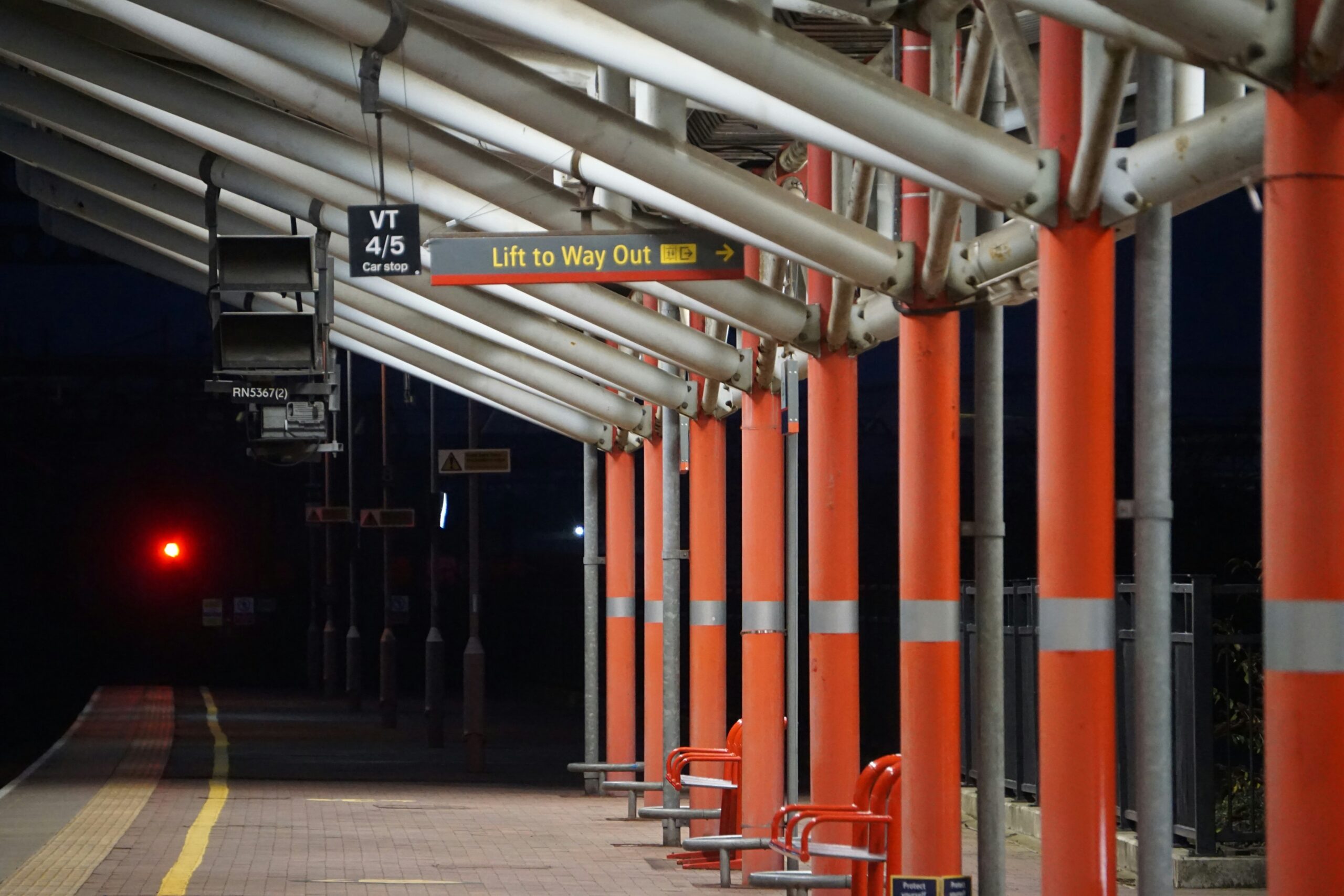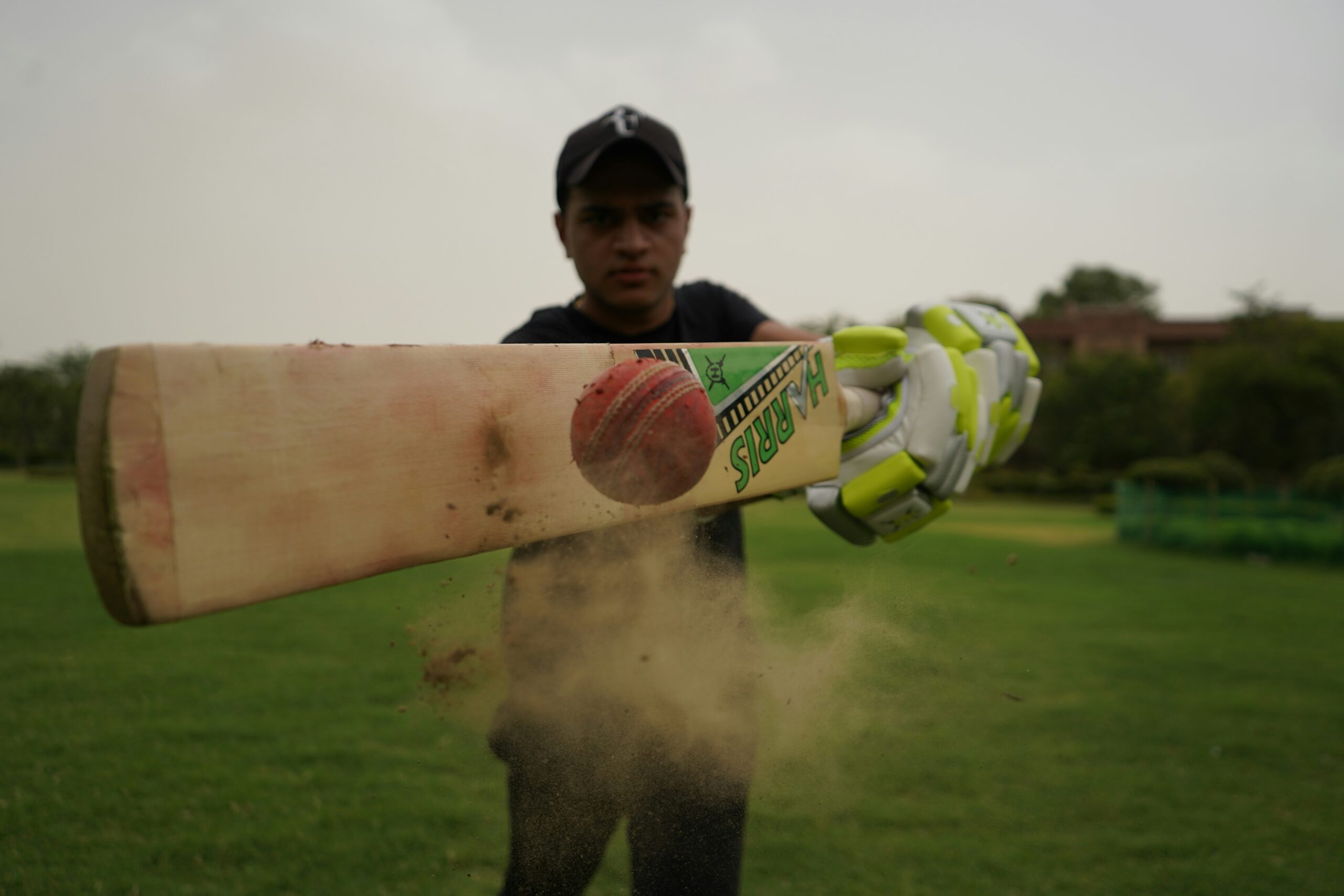Introduction to Al-Hilal and Persepolis
Al-Hilal and Persepolis are two titans of Asian football, each with rich histories and remarkable achievements that have solidified their status within the continent’s top leagues. Established in 1957, Al-Hilal Football Club, based in Riyadh, Saudi Arabia, is one of the oldest and most successful clubs in the region. The club holds numerous domestic titles, including a record number of Saudi Pro League championships and multiple King Cups. Furthermore, Al-Hilal has gained international recognition by clinching the AFC Champions League title multiple times, establishing itself as a formidable force in Asian football.
On the other hand, Persepolis Football Club, founded in 1963 in Tehran, Iran, is similarly celebrated for its achievements in both domestic and continental competitions. The club has a passionate fan base and a storied rivalry with Esteghlal FC, known as the Tehran Derby, which illustrates its significance in Iranian football. Persepolis has won numerous Iranian league titles and domestic cups, and it has also reached significant heights in the AFC Champions League, adding to its prestige across Asia.
The rivalry between Al-Hilal and Persepolis extends beyond the pitch, encompassing deep-rooted fan loyalty and cultural connections. Al-Hilal’s supporters, affectionately known as the “Blue Brigade,” are renowned for their vibrant encouragement and a fervent atmosphere during matches. Meanwhile, Persepolis enjoys the unwavering support of the “Red Army,” whose dedication fuels the club’s drive for success. The contrasting styles of play and varying football philosophies further enhance the competitive nature of their encounters, making each matchup a crucial event in Asian football.
In anticipation of this thrilling rivalry, understanding the historical significance and deep connections of both clubs enables fans and analysts to appreciate the magnitude of their competitions on a grand scale.
Historical Matchups: A Look Back
The history of competitive encounters between Al-Hilal and Persepolis highlights the intensity and passion surrounding Asian football. As two of the continent’s most successful clubs, their historical matchups have evolved into dramatic narratives filled with memorable moments. Over the years, these teams have faced each other numerous times in various prestigious tournaments, particularly in the AFC Champions League, where the stakes are profoundly high.
One of their first notable encounters occurred during the 1990s, marking the beginning of a fierce rivalry. Al-Hilal, representing Saudi Arabia, had a significant edge during those early years, showcasing their tactical prowess and a well-rounded squad. Conversely, Persepolis, hailing from Iran, gradually began to find their footing, developing a reputation for their dynamic play and resilience. Key matches in this era laid the foundation for a rivalry characterized by nail-biting finishes and passionate fan support.
Fast forward to the last decade, and recent encounters have produced enthralling contests that exemplify the peak of Asian club football. In their most recent meetings, both clubs demonstrated contrasting styles—Al-Hilal’s disciplined, possession-oriented approach clashing with Persepolis’ fast-paced counterattacks. These tactical battles are often reflected in the scoreboard, with both teams frequently exchanging victories and narrowly contested draws. Noteworthy are the instances when the matches not only determined bragging rights but also had significant implications for their respective journeys in the tournament.
Overall, the historical matchups between Al-Hilal and Persepolis serve not just as a record of scores and statistics, but as a testament to the growing competitiveness and depth of talent within Asian football. As both teams continue to evolve, their future encounters promise to add new chapters to this riveting rivalry, shaping the landscape of club football in Asia.
Tactical Analysis: Playing Styles and Strategies
In the competitive landscape of Asian football, Al-Hilal and Persepolis deploy distinctive tactical approaches that significantly shape their performances on the pitch. Al-Hilal, known for its fluid playing style, often adopts a 4-2-3-1 formation. This structure allows for a blend of defensive solidity and attacking creativity. The midfield duo typically comprises a mix of defensive-minded players and creative playmakers who transition seamlessly between defense and attack. Key players such as their dynamic wingers and a prolific striker emphasize width and pace, aiming to stretch the opponent’s defensive line.
Conversely, Persepolis tends to utilize a more conservative 4-3-3 formation which emphasizes robust defensive organization. This setup allows for a compact midfield, effectively cutting off passing lanes to disrupt the opposition’s rhythm. The team’s reliance on counter-attacks means that they often absorb pressure before swiftly transitioning to offensive play. Key players for Persepolis include a strong central midfielder renowned for ball-winning and an experienced forward capable of exploiting spaces left by opposing defenders. The interplay between these players creates a balance between defensive resilience and attacking transition.
The tactical nuances of both teams indicate a potential clash of styles. Al-Hilal’s ability to maintain possession and control the tempo could test Persepolis’s defensive strategies. Conversely, Persepolis’s prowess in counter-attacking could exploit any lapses in Al-Hilal’s offensive play. Understanding the strategies employed by each team provides a glimpse into how they prepare to face one another. Each team’s tactics will not only influence the match dynamics but could ultimately determine the success or failure of their quest for glory in Asian football.
Key Players to Watch
The anticipated clash between Al-Hilal and Persepolis is set to showcase some of the most exceptional talents in Asian football. For Al-Hilal, the spotlight is on their prolific striker, Odion Ighalo. Renowned for his clinical finishing and remarkable positioning, Ighalo has consistently been a top scorer in the Saudi Pro League. In the previous season, he netted over 20 goals, significantly contributing to Al-Hilal’s attacking prowess. His ability to exploit defensive weaknesses, coupled with his experience playing at both international and club levels, makes him a formidable force. Ighalo’s versatility allows him to adapt to different formations, enhancing Al-Hilal’s tactical flexibility.
On the other side, Persepolis presents an equally impressive player in Sardar Azmoun. The Iranian forward, currently a key figure in the team, has made a name for himself with his speed and agility. Azmoun’s performance in the Iranian Pro League has been nothing short of stellar, finishing as one of the league’s top scorers last season. His capability to link up with other attackers, combined with his forward drive, positions him as a critical player for Persepolis. Not only does he possess an eye for goal, but he also excels in creating opportunities for his teammates, serving as a pivotal element in the team’s offensive strategy.
Both Ighalo and Azmoun have the potential to dictate the tempo of the match. Their individual skills are complemented by their roles within their respective teams, making them crucial to Al-Hilal and Persepolis’s success. As these titanic teams gear up for battle, the performances of these key players will likely prove to be decisive in determining the outcome of the match. Fans and analysts alike will be keenly observing their contributions as they take center stage in this high-stakes encounter.
Fan Culture and Rivalry
The fervent fan bases of Al-Hilal and Persepolis are integral to the vibrant tapestry of Asian football, reflecting not only loyalty but also a deep-seated passion that transcends mere sport. These two clubs, situated in Saudi Arabia and Iran respectively, boast some of the most dedicated supporters in football history. The supporters’ culture surrounding both teams is marked by intense rivalries that foster a unique atmosphere during matches. This connection is further illustrated by the way fans express their allegiance through various chants, colors, and collective displays of fervor.
During home games, the stadiums often transform into arenas of unyielding energy, where the air reverberates with the sounds of synchronized chants. Al-Hilal’s supporters, known for their distinct blue attire, can fill the stands with a sea of their team’s colors, while the passionate and spirited fans of Persepolis paint their own expectations in red. This overwhelming visual and auditory spectacle contributes to a hostile environment for visiting teams and creates an electric atmosphere that players and coaches often cite as a crucial factor in their performance.
The rivalry extends beyond the pitch, intertwining with community ties and regional pride. Fans of Al-Hilal and Persepolis often draw upon historical narratives and regional identities, nurturing their fight for supremacy in the Middle East football landscape. This rivalry serves as a source of identity for many supporters, creating bonds tied to their cities and cultural heritage. The amicable off-field interactions may sometimes occur, as fans recognize shared experiences, yet the competitive spirit remains undeniable, showcasing the complex layers of fan culture surrounding these titans of Asian football. Ultimately, the passionate rivalry between Al-Hilal and Persepolis is not only a reflection of sporting competition but a profound symbol of community pride and dedication to football.
Recent Performance and Form Guide
As Al-Hilal and Persepolis prepare for their highly anticipated clash, a thorough examination of their recent performances offers valuable insights into their current form. Al-Hilal, one of the prominent clubs in the Saudi Professional League, has shown consistent excellence in both domestic and international competitions. Their prior matches reflect a strong offensive capability, with key players contributing to their success. Notably, their last few league outings have resulted in a series of victories, reinforcing their position as serious contenders.
On the other hand, Persepolis, representing the Iranian football scene, has also demonstrated commendable resilience. Their campaign in the Persian Gulf Pro League showcases a blend of tactical discipline and teamwork. Recent results have been a mix of triumphs and challenges; however, their ability to bounce back from setbacks indicates a robust mental fortitude in the squad. The team has been working diligently to address injuries that have plagued some of their critical players, which may impact their upcoming match against Al-Hilal.
Both teams have had their share of international fixtures, with Al-Hilal partaking in the AFC Champions League, where their performances have garnered positive attention. Meanwhile, Persepolis has demonstrated tenacity in regional competitions, consistently striving for excellence. The influence of injuries cannot be overlooked; for Al-Hilal, the return of key players has invigorated their squad, while Persepolis has been navigating the repercussions of missing vital components. These factors, combined with the latest match statistics, frame the narrative of their respective journeys leading to this significant encounter, promising an exhilarating showdown.
Predicted Lineups and Match Preview
The upcoming showdown between Al-Hilal and Persepolis promises to be a thrilling encounter, reflecting the high stakes of Asian football. Both teams have their own distinctive playing styles, and the anticipated lineups might reveal coaching tactics that could heavily influence the match outcome. Al-Hilal, known for their attacking prowess, is expected to deploy a 4-3-3 formation, featuring star players who possess the ability to turn the tide of a match. Key players like Odion Ighalo and Saudi international Salem Al-Dawsari will likely spearhead the attack, supported by a solid midfield unit consisting of experienced playmakers such as Gustavo Cuéllar.
On the other side, Persepolis, the Iranian powerhouse, might counter with a more defensive 4-2-3-1 formation. This set-up allows them to capitalize on their swift counter-attacks while maintaining a strong backline. The midfield duo of Ahmad Noorollahi and Kamal Kamyabinia will be crucial for disrupting Al-Hilal’s rhythm. In addition, forward Mehdi Abdi’s pace and creativity will play a key role in breaking through their opponents’ defenses. Coach Yahya Golmohammadi is likely to focus on enhancing ball retention to seize control during critical moments while utilizing set-pieces as a potential game-changer.
In terms of match strategies, Al-Hilal will aim to dominate possession and apply pressure from the outset, which could force Persepolis into a more reactive stance. Conversely, Persepolis will look to absorb the pressure and exploit gaps left by Al-Hilal during transitional phases. The synergy between both teams will be a focal point, as tactical adaptability may prove decisive. With both clubs motivated to secure victory, fans can expect an exhilarating football experience that showcases the best of Asian talent on the field.
The Impact of the Match on Asia’s Football Landscape
The recent clash between Al-Hilal and Persepolis served not only as a pivotal moment for the teams involved but also as a significant influence on the broader Asian football landscape. The outcome of such high-stakes encounters can profoundly affect league standings, alter the dynamics of continental competitions, and even reshape player transfer markets across the continent.
A victory for Al-Hilal, for instance, solidifies their position as a dominant force in the Saudi Pro League and enhances their reputation in the AFC Champions League. This success can lead to increased investment in the squad, potentially drawing high-caliber players who are eager to be part of a successful club. Conversely, a defeat for the Saudi side might prompt an internal reassessment and strategic shifts, possibly impacting player morale and future performance in subsequent matches.
Persepolis, too, stands to gain significantly from a favorable result. A win not only bolsters their standing within the Iranian Pro League but also reinforces their credentials as a formidable competitor on the Asian stage. Enhanced visibility can attract attention from sponsors and youth talent, contributing to the overarching growth of football in Iran. Additionally, strong performances could facilitate lucrative transfer deals for standout players, further elevating the league’s profile.
Moreover, the implications extend beyond just the immediate teams. The match influences the perceptions of fans and stakeholders alike, galvanizing interest and participation in football across Asia. Regional rivalries often intensify, leading to increased viewership and attendance at matches, thereby enriching the commercial prospects of the sport. As clubs invest more in facilities and youth development, the ripple effects of this clash contribute to the overall evolution of Asian football.
Conclusion: The Significance of Al-Hilal vs Persepolis Rivalry
The rivalry between Al-Hilal and Persepolis stands as one of the most compelling narratives in Asian football. Over the years, this matchup has not only showcased high-quality football but also the rich cultural tapestry of their respective nations. Al-Hilal, representing Saudi Arabia, and Persepolis, hailing from Iran, embody the passion and competitive spirit that define football in Asia. Their encounters are more than just games; they are events that capture the attention of millions, fostering a sense of unity and pride among supporters.
This rivalry has implications that extend beyond the pitch. It serves as a catalyst for the growth of football culture across Asia, inspiring younger generations to take up the sport and engage in its values of teamwork, discipline, and resilience. The significance of the Al-Hilal vs Persepolis rivalry is evident in its ability to transcend borders, bringing together diverse fan bases and highlighting the cultural heritage of their respective nations. The matches often evolve into festivals, celebrating not only the sport but also a shared passion that resonates across national lines.
Furthermore, as Asian football continues to gain global recognition, the prominence of this rivalry underscores the increasing competitiveness of the Asian leagues. It illustrates how clubs from the continent can hold their own on the international stage, attracting attention from fans and sponsors alike. In essence, the Al-Hilal vs Persepolis clash symbolizes the ambitions of Asian football, reflecting a commitment to excellence and a desire to elevate the sport to new heights.
As we look ahead, it is essential for fans and stakeholders alike to engage with and support this cultural phenomenon. The continued evolution of this rivalry will undoubtedly play a crucial role in shaping the future landscape of Asian football, making it an exciting journey for everyone involved.



